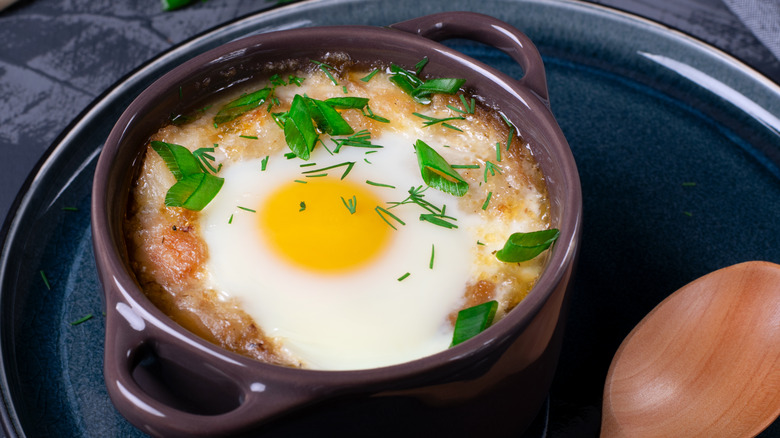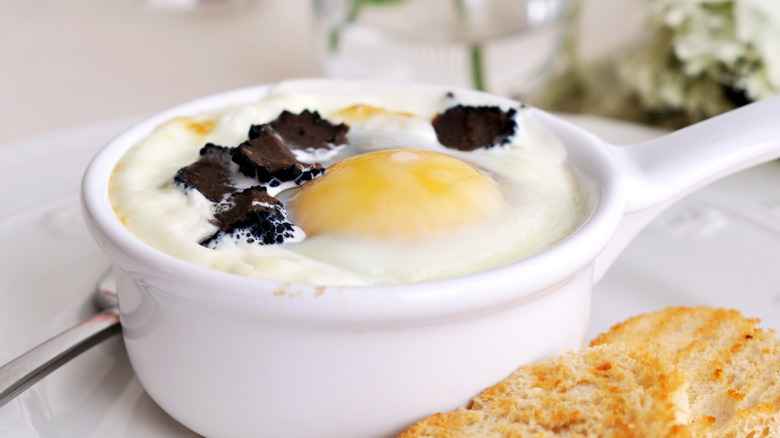The Simple Trick For Ensuring Better Eggs En Cocotte
If it feels like you've made eggs eight ways to Sunday and you're looking for a new way to serve them up, why not try eggs en cocotte? Sometimes referred to as shirred eggs, eggs en cocotte are a classic yet often overlooked method of cooking eggs. All that's required are small ramekins or muffin tins into which the eggs are cracked and then either baked in a hot water bath or steamed on the stovetop. When done correctly, eggs en cocotte are runny, creamy, and tender little egg pockets.
The only problem with this method is that the egg yolk tends to wander to the side of the ramekin. This is true whether the eggs are cooked on their own or with a layer of extra ingredients. When the yolk moves like this, it ends up close to the hot side of the dish where it cooks faster and can become chalky, which is not the texture you're aiming for when it comes to eggs en cocotte.
The easiest way to ensure that your egg yolk doesn't veer off to the side is to make a little divot in the food layer below in order to create a little basket for the yolk to sit in. This will keep it centered and insulated so it remains runny even when the surrounding white has cooked. So don't hesitate to load your eggs in cocotte up with yummy ingredients to not only protect them but add an array of wonderful flavors.
How to make eggs en cocotte
Start your eggs en cocotte by filling a high sided baking dish or medium sized pot three-quarters of the way with hot water. If you're baking the eggs, preheat the oven to 375 degrees Fahrenheit. You'll need to grease your ramekins to ensure that each egg doesn't stick, then add your extra ingredients. Get as creative as you'd like — think a coating of herbs like parsley and chives, a sprinkling of your favorite cheese, a purée of mushrooms, smoked salmon, or Canadian bacon.
Next, the egg goes in. Remember that the yolk cooks best when it is centered, so don't forget to make that divot in your base layer before cracking it open. The ramekins are then placed in the pot or baking tray with the hot water bath. Make sure that whatever cooking vessel you use can be covered in order to allow the steam to envelop the eggs and cook the top as well as the bottom.
Bake the eggs for 12 to 15 minutes for runny yolks. If you're cooking on the stovetop, this will only take three to four minutes. Afterwards you can eat your eggs en cocotte as they are within the ramekin, or move them to a plate or piece of toast.

